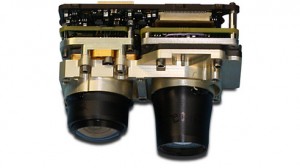BAE Systems has introduced one of the smallest multispectral sensors available for unmanned systems — an innovation that will help improve soldier situational awareness by reducing the time required to identify targets. On today’s battlefield, soldiers need the ability to process, understand, and engage with their environment at any time, under any condition or circumstance. The company’s Digitally Fused Sensor System (DFSS) offers a combination of multiple capabilities in a single sensor so that soldiers can intuitively assess a scene using an unmanned vehicle in time-critical situations.
“With sensor fusion, soldiers don’t need to switch back and forth between the daytime camera and the infrared camera, then try to compare those images in their heads as they do with existing systems,” said Eric Hansen, business development manager for Intelligence, Surveillance & Reconnaissance Solutions at BAE Systems. “Our new technology allows warfighters to quickly determine whether people or vehicles are hiding and if they present a threat.”
The DFSS system allows soldiers to see laser designator spots even in darkness, making it easier to coordinate and confirm target marking with unmanned aerial vehicles. The shading and high-definition imagery provide depth to the scene, and rapid target acquisition is enabled when the system cues the operator to potential problem areas.
By blending low-light and infrared images in a single display, fighting forces get a broad range of imaging options, including full daylight, deep shadows, dawn and dusk, illuminated night operations, and darkness. The unmanned aerial, ground, or underwater vehicle provides the picture via a sensor mounted to the vehicle. The system adjusts its own settings to each mission’s environmental conditions so operating forces don’t need to choose between an electro-optical or an infrared sensor before launching the unmanned vehicle. This is especially important as mission durations are becoming longer and new tactics and techniques of surveillance are being explored.



















